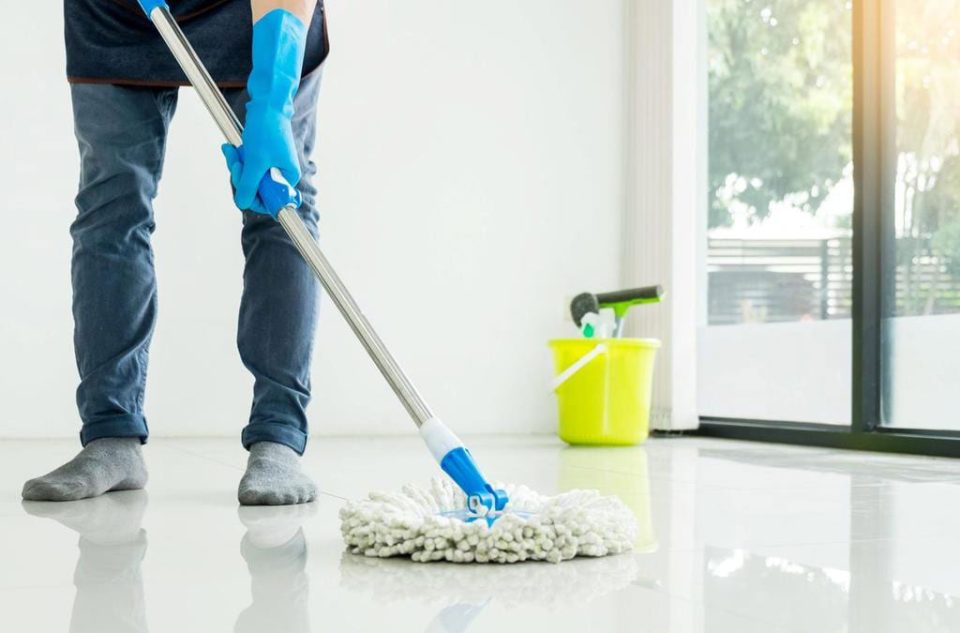Stains are inevitable. Whether it’s the accidental spillage of a cup of coffee, a smear of lipstick on a couch cushion, or a splash of red wine at dinner, stains can quickly ruin the appearance of your favorite clothing, upholstery, or flooring. But not all stains are created equal, and while traditional cleaning methods may work for some, others require specialized products or techniques. If you find yourself struggling to keep your home spotless and your items looking pristine, it’s possible that your cleaning and maintenance routine is missing a few essential stain removal tools. In this article, we’ll explore key stain removal essentials every homeowner should have in their arsenal to address those tough, persistent stains that seem impossible to remove.
1. Understanding Stains: Different Types Require Different Approaches
Before delving into the stain removal essentials, it’s crucial to understand that different types of stains require different solutions. A greasy stain, such as one from cooking oil, needs to be tackled differently than a protein-based stain, like blood or egg. Likewise, tannin-based stains, like coffee or wine, require a unique approach compared to dye stains from ink or red lipstick. Understanding the type of stain you’re dealing with is the first step toward choosing the right product and method for removal.
2. Stain Removal Essentials You Should Always Have
A. Enzyme-Based Cleaners
Enzyme-based cleaners are an absolute must for any stain removal kit, especially for organic stains. These cleaners work by breaking down the proteins in the stain, making it easier to lift the stain from fabrics or upholstery. Protein-based stains, such as blood, sweat, vomit, or pet urine, respond particularly well to enzyme cleaners. When choosing an enzyme cleaner, make sure it’s suitable for the surface or fabric you’re treating, whether it’s carpet, upholstery, or clothing.
For instance, using an enzyme cleaner on a blood stain in a carpet works wonders by breaking down the proteins in the blood that make it so difficult to remove. Just be sure to follow the instructions carefully, as these cleaners often require a little time to work their magic.
B. Oxygen Bleach
For stains that seem particularly stubborn, oxygen bleach can be a game changer. Unlike chlorine bleach, which can damage fabrics and irritate skin, oxygen bleach is a gentle alternative that’s safe for most fabrics, including colored clothes. It works by releasing oxygen molecules that lift stains from fabrics without harming the material. Oxygen bleach is particularly effective on set-in stains, such as those from food, coffee, wine, and even some grass stains.
To use oxygen bleach, mix it with warm water, soak the stained fabric, and let it sit for a while before washing. It’s a non-toxic alternative that’s also biodegradable, making it a great option for environmentally conscious consumers.
C. White Vinegar
White vinegar is one of the most versatile and inexpensive cleaning agents available. Its acidity works wonders in breaking down grease, grime, and stains, particularly in fabric and carpet care. It’s particularly effective at removing deodorant marks, light food stains, and even mildew odors from fabrics. White vinegar can also help neutralize pet odors, such as urine, when mixed with water and sprayed onto the affected area.
Additionally, vinegar can be used as a fabric softener in your laundry routine, helping to break down soap residue while also keeping clothes soft and fresh. If you’re dealing with water-based stains like coffee or wine, vinegar works wonders as part of a quick stain-fighting solution.
D. Baking Soda
Baking soda is another multi-purpose product that belongs in every stain removal toolkit. Its mild abrasiveness makes it an excellent choice for scrubbing out tough stains, especially when combined with other ingredients like vinegar or lemon juice. Baking soda can be used to lift greasy stains, remove odors from carpets and upholstery, and clean hard-to-reach crevices around the house.
For fabric stains, baking soda can be used to create a paste when combined with a little water. Apply this paste to the stain, allow it to sit for a few minutes, and then gently scrub or blot away the stain. This technique is effective for stains from food, grease, or body oils.
E. Hydrogen Peroxide
Hydrogen peroxide is a fantastic stain-fighting tool, especially when dealing with light-colored fabrics or white clothing. It’s a mild bleaching agent that can break down organic matter in stains such as blood, wine, and even mold. It’s a perfect product to tackle those stains that have been sitting too long and have become tough to remove with conventional cleaning methods.
Hydrogen peroxide works best for hard surfaces like tile and grout, as well as for whitening laundry. A common method for stain removal is to pour hydrogen peroxide directly onto the stain and let it bubble for a few minutes before blotting with a clean cloth. Just be careful to test it on a small, inconspicuous area first to ensure it doesn’t damage or discolor the fabric.
F. Cornstarch
Cornstarch is not just for the kitchen—it’s a handy tool for removing oil and grease stains from fabrics. It’s an ideal choice for tackling greasy stains from cooking or automotive grease. Simply sprinkle cornstarch on the stain, let it sit for about 15-30 minutes, and then brush it away. For a more stubborn stain, you can mix cornstarch with a bit of water to form a paste. Apply the paste to the stain, let it dry, and then vacuum up the residue.
G. Commercial Stain Removers
While homemade solutions and natural ingredients are effective for many types of stains, sometimes you may need the power of commercial stain removers. These products are formulated specifically for stubborn stains and are often more concentrated than natural alternatives. Look for stain removers that are designed for specific stains, such as wine removers, grease removers, or pet stain removers.
When using a commercial stain remover, be sure to read the label carefully to ensure it is suitable for the fabric or surface you’re treating. Some removers may be too harsh for delicate fabrics or colors, so always test in an inconspicuous area first.
3. Essential Tools for Stain Removal
In addition to having the right cleaning products, certain tools can make stain removal faster and more effective. Here are a few essentials:
A. Microfiber Cloths
Microfiber cloths are gentle, highly absorbent, and effective at trapping dirt and liquids. They are excellent for blotting stains, as they can absorb moisture quickly without pushing the stain further into the fabric. Always use a clean microfiber cloth when blotting a stain to avoid spreading the stain around.
B. Stiff-Bristled Brush
For tough stains, particularly on carpets or upholstery, a stiff-bristled brush can be a great tool for scrubbing away dirt or stains. It’s especially helpful for breaking down particles trapped in fibers. Be sure to test the brush on an inconspicuous area before using it on the stain to ensure it doesn’t damage the material.
C. Stain Removal Pen
For on-the-go stain removal, a stain removal pen can be a lifesaver. These pens are compact, easy to carry, and effective at removing fresh stains from clothing. While they may not work for set-in stains, they are perfect for dealing with small, immediate stains that need quick attention.
4. Preventing Stains in the First Place
While it’s impossible to completely eliminate the risk of stains, taking preventive measures can significantly reduce their occurrence. Here are a few tips for preventing stains from becoming a problem:
-
Use a stain repellent on fabrics: For clothing and upholstery, consider applying a fabric protector or stain repellent. These sprays create a protective barrier that helps prevent liquids from soaking into the material.
-
Be proactive with spills: When a spill occurs, the faster you act, the better. The longer a stain sits, the harder it is to remove. Blot, don’t rub, and act quickly.
-
Use placemats and coasters: In areas like the dining room or kitchen, place mats, coasters, and tablecloths can absorb spills before they reach your tablecloth or carpet.
5. Conclusion: Stain Removal Essentials for a Cleaner Home
The key to effective stain removal lies in understanding the nature of the stain and having the right products and tools on hand. From enzyme cleaners to natural alternatives like vinegar and baking soda, there are plenty of options for removing even the toughest stains without resorting to harsh chemicals. With the right stain removal essentials and tools, your home can stay looking fresh and clean, free from the frustration of stubborn stains. By acting quickly and having a good system in place, you can restore your fabrics, carpets, and upholstery to their pristine condition, keeping your home in top shape year-round.

